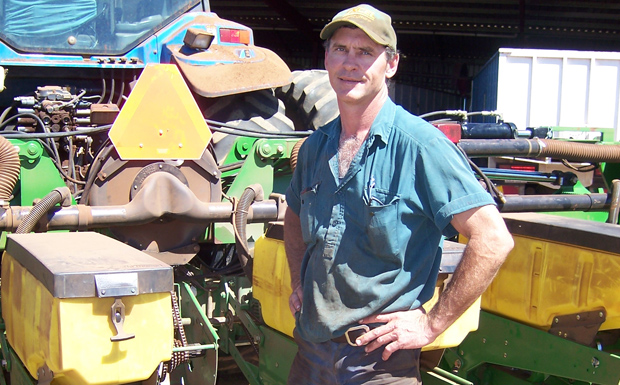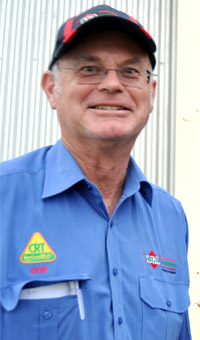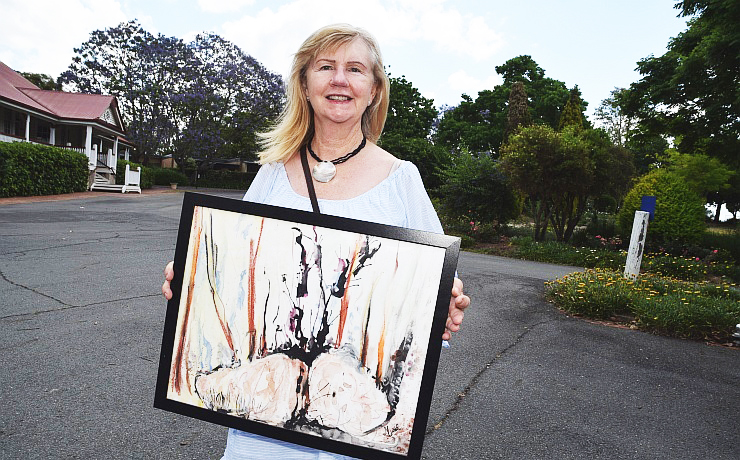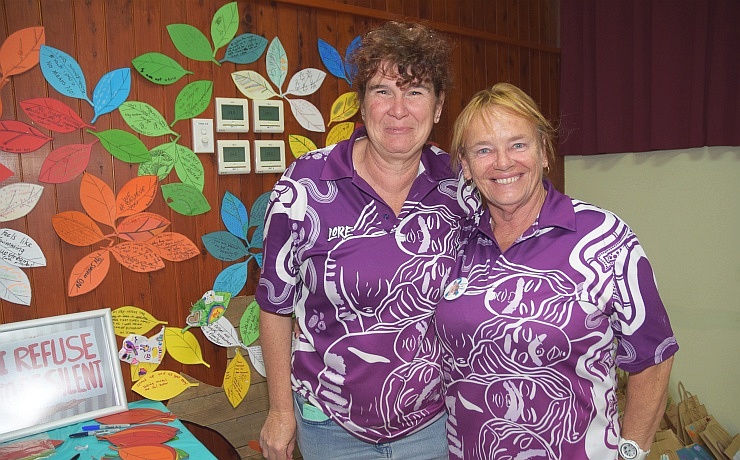

May 27, 2015
Kingaroy grain and peanut growers are tackling the scourge of sclerotinia head on with new trials testing a series of fungicides and soil ameliorants to combat the devastating soil-borne fungus.
Kumbia farmer Julian Cross says the damage from the disease ranges from 20-30 per cent yield losses in an average year to up to a 100pc crop wipe outs in very wet years.
“Coming up to the peanut setting, the crop can look pretty impressive and you’re thinking 3-4t/ha, but give it six weeks of wet weather and you’re down to 0.5-1t/ha,” Mr Cross said.
“At $800-$1000/t it’s not hard to rattle up a few thousand dollars a hectare loss. You can see why we’re keen to find a cure or try at least to control the disease and work out what we can do about it.”
Mr Cross farms about 500ha south-east of Kumbia, following a two-year rotation of peanuts, winter cereals, summer corn and ending with a fallow period.
The disease is prevalent across his property which receives average annual rainfall of 700mm.
“There’s several chemicals registered on the market but the effectiveness is iffy at best. The only way that I know to control it is with a square plough, which is very expensive, it’s a slow operation, and you lose your ground cover and get a lot of erosion,” Mr Cross said.
He is one of a number of local farmers hosting a three-year trial supported by the Grains Research and Development Corporation (GRDC) testing the performance of a number of unregistered soil fungicides as well as soil ameliorants.
The project is being led by Ian Crosthwaite, senior agronomist with BGA AgriServices Kingaroy, through his role with the GRDC’s Burnett area Grower Solutions Group.
“Sclerotinia is right across the peanut growing areas and the hard part is it’s difficult to predict if you’re going to have a problem,” Mr Crosthwaite said.
He said the trials were taking a whole of farming system view of the various treatments being trialled, rather than just focussing on the costs or benefits for one particular crop type.
It is hoped that after the third replication of the trial in 2016, the results will reveal if any of the fungicide products are effective enough to take forward for registration.
Although not a recommended practice, the trials are also testing different application rates of Naturamin, a soil ameliorant comprised of crushed rock product plus microbes. This decision was based on anecdotal evidence from a number of local growers that it had been effective in reducing the incidence of sclerotinia on their properties.
“Some other growers reckon Naturamin has improved their country and cut their disease back to basically zero,” Mr Cross said.
“If we can do that, that could be worth $100,000 in any given season easily enough, which is a fair bit of loot and just about the difference between surviving and not surviving.
“Unless we find an answer the alternative is giving up peanuts – and in a couple of paddocks here that’s nearly what I’m looking at doing – or dragging out the old square plough because that’s the only way I know to fix it.”
The square plough is a last resort for Mr Cross who has witnessed a dramatic transformation in his soil health and fertility over the last six years since embracing controlled traffic farming and strip tillage.
“The soil is improving, the soil structure has changed and we’re able to grow crops now in extremely dry conditions where couldn’t before. That’s because the soil is so much softer, the roots can penetrate down deeper and the crops can survive a lot longer, while in a wet year we’re not getting the erosion we were getting,” Mr Cross said.
“I could never go back to conventional farming after seeing what we’ve achieved with our strip tilling, but the thing is the happier and healthier the soil, the more the sclerotinia bites.”
The results are backing his approach with crop yields increasing by more than 20pc in recent years, while workloads have fallen by 30-40pc.
“We’ll harvest corn, spray it out, run the mulcher over it, and then when the moisture is right run the strip tiller through it, place our fertiliser down deep – we’re getting to 30cm deep now very efficiently,” he said.
“We’re running at about 6L/ha now compared to about 12L when we started when we were battling to get to 20cm of depth. The tractor is not working as hard and the country is improving – it’s not cloddy and lumpy after rain which gives you a bit more freedom and means time isn’t as much of a factor as it used to be.”
It’s an approach Mr Crosthwaite is encouraging other growers to adopt as well, arguing that the entry point did not have to be expensive new machinery, with growers able to add new components as they could afford it.
“Growers are getting into it progressively as they can afford it. You have to do it realistically, do an economic appraisal of your own situation before you rush out and spend a lot of money,” he said.
Mr Cross said variety selection was also an important factor in limiting the effect of sclerotinia, with the recently released American peanut Fisher and the older variety Page handling the disease far better than locally bred lines Middleton and Redvale.
[Source: GRDC]






















